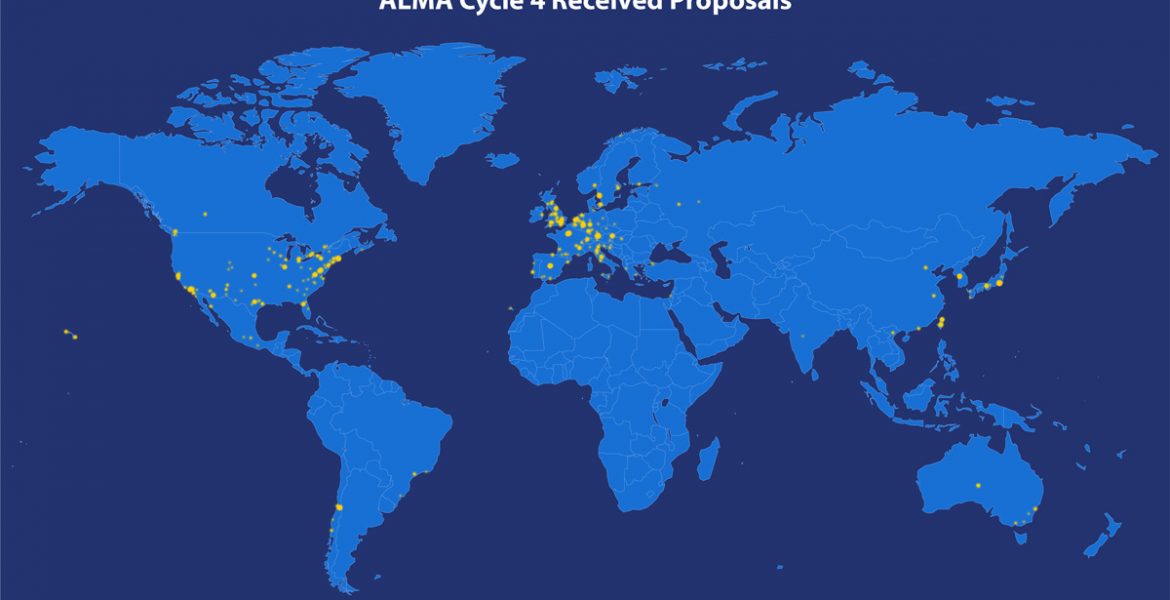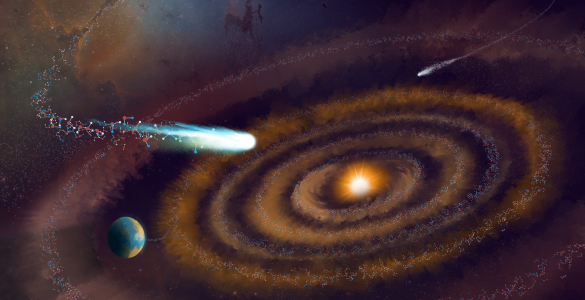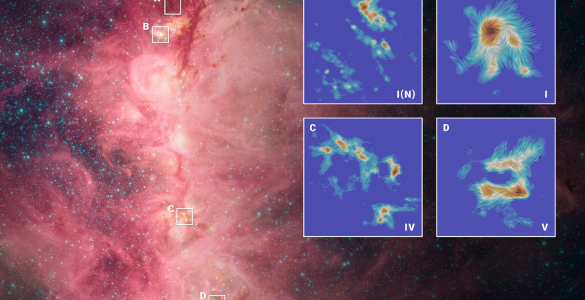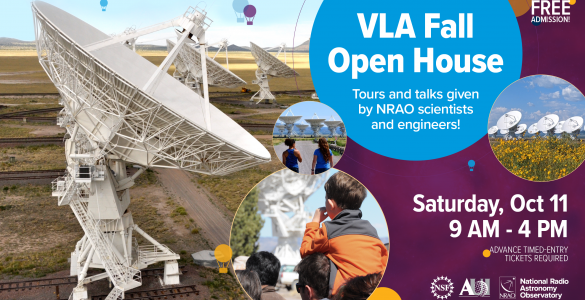The international partners in the Atacama Large Millimeter/submillimeter Array (ALMA) saw record demand for telescope time from the international astronomical community during ALMA’s Cycle 4 Call for Proposals. This new observing cycle begins October 2016 and continues through September 2017.
The high demand for this revolutionary telescope was reflected in a 50-percent increase in the number of hours requested during Cycle 4 compared to the previous observing cycle. For Cycle 4, more than 400 astronomers received observing time with ALMA, the most powerful telescope of its kind.
The selection process took almost five months to complete and included experts from around the world meeting for a week in June in Vienna, Austria, to evaluate a field of 1,571 proposals. Combined, these proposals account for 18,640 hours of observing time (12,285 hours for the 12-meter Array and 6,345 hours for the Compact Array).
At their meeting, the 145 science advisers of the ALMA Proposal Review Committee established the selection criteria and ranked each submission as objectively as possible. The selection criteria included the scientific merit of the proposal, its technical feasibility, and the likelihood of its success.
In the end, the review committee granted 3,000 hours of observing time on the 12-meter Array and 1,800 hours on the Compact Array.
The research category with the most proposals requested and selected — about one in every four — was Interstellar Medium, Star Formation and Astrochemistry. Three other categories — Cosmology and High Redshift Universe; Galaxies and Galactic Nuclei; and Circumstellar Discs, Exoplanets and the Solar System – each account for about one of every five proposals. The Stellar Evolution and the Sun category accounts for about one in ten.
The astronomers affiliated with 476 selected proposals will have access to at least fifty-three ALMA antennas to search the Universe — forty-three 12-meter antennas and ten 7-meter antennas. Though all of ALMA’s 66 antennas are operational, ongoing maintenance and relocation limits the total number of antennas available at any given time. For the upcoming observations, the antennas will utilize seven receivers (Bands 3, 4, 6, 7, 8, 9 and 10), each probing a different region of the millimeter/submillimeter spectrum. During Cycle 4, ALMA will be able to observe with a maximum angular resolution of 0.029 arc-seconds, using a 12.6-kilometer maximum baseline.
The National Radio Astronomy Observatory is a facility of the National Science Foundation, operated under cooperative agreement by Associated Universities, Inc.
# # #
Contact:
Charles Blue
NRAO Public Information Officer
+1 434.296.0314; cblue@nrao.edu
The Atacama Large Millimeter/submillimeter Array (ALMA), an international astronomy facility, is a partnership of the European Organisation for Astronomical Research in the Southern Hemisphere (ESO), the U.S. National Science Foundation (NSF) and the National Institutes of Natural Sciences (NINS) of Japan in cooperation with the Republic of Chile. ALMA is funded by ESO on behalf of its Member States, by NSF in cooperation with the National Research Council of Canada (NRC) and the National Science Council of Taiwan (NSC) and by NINS in cooperation with the Academia Sinica (AS) in Taiwan and the Korea Astronomy and Space Science Institute (KASI).
ALMA construction and operations are led by ESO on behalf of its Member States; by the National Radio Astronomy Observatory (NRAO), managed by Associated Universities, Inc. (AUI), on behalf of North America; and by the National Astronomical Observatory of Japan (NAOJ) on behalf of East Asia. The Joint ALMA Observatory (JAO) provides the unified leadership and management of the construction, commissioning and operation of ALMA.





















